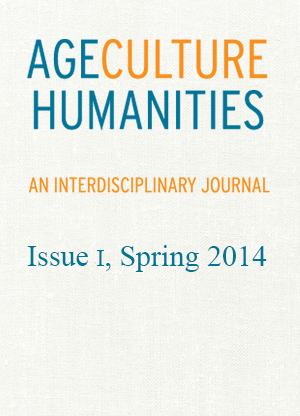 Read the Spring 2014 issue of Age, Culture, Humanities for a new article on one of Wilder’s short plays. In “’Putting on Her White Hair’: The Life Course in Wilder’s The Long Christmas Dinner,” Valerie Barnes Lipscomb discusses the representation of age and aging on the stage in Wilder’s short play and adapted short opera, The Long Christmas Dinner.
Read the Spring 2014 issue of Age, Culture, Humanities for a new article on one of Wilder’s short plays. In “’Putting on Her White Hair’: The Life Course in Wilder’s The Long Christmas Dinner,” Valerie Barnes Lipscomb discusses the representation of age and aging on the stage in Wilder’s short play and adapted short opera, The Long Christmas Dinner.
The article will be available in print at a later time, while a digital version of the article is available now for free. Visit the Age, Culture, Humanities website to read the article.
Title
“’Putting on Her White Hair’: The Life Course in Wilder’s The Long Christmas Dinner”
Abstract
Thornton Wilder’s The Long Christmas Dinner (1931) holds a unique place in American drama, as it covers ninety years in the history of one family. The one-act play captivated composer Paul Hindemith, who collaborated with Wilder to adapt The Long Christmas Dinner as a 1961 short opera by the same name. Analyses of both works overlook the representation of age and aging on stage. Actors perform the aging of characters from young adulthood to death in just a few minutes of stage time, challenging the “difference” of age by suggesting the stability of human identity over the life course. One element of ageism is the perception that changes of age entail changes in identity. In Wilder’s play, although the actors use props that stereotype the changes of age, such as a white wig or wheelchair, no major transformation of identity is evident. The play is short enough that the audience never forgets that one actor embodies a character from young adulthood through death. Thus, the onstage life course becomes a natural continuum marked by milestones of experience, rather than an Othering of the aged. Each character who grows old remains central to the family until death. As age studies activists and scholars look to the arts for reflections of social age construction and for potential models of age equality, they may find useful this artistic vision of age as performative.
Lipscomb, Valerie. “’Putting on Her White Hair’: The Life Course in Wilder’s The Long Christmas Dinner.” Age, Culture, Humanities. Ed. Port, Cynthia and Aagje Swinnen. 2014. Coastal Carolina U. 20 Jan. 2014 <http://ageculturehumanities.org/WP/putting-on-her-white-hair-the-life-course-in-wilders-the-long-christmas-dinner-2/>.
Age, Culture, Humanities
Age, Culture, Humanities promotes cross-disciplinary, critical investigations of the experiences of age, aging, and old age, as seen through the lens of the humanities and arts. The goals are to consider age as a category of identity, advance understanding of the aging process and of age differences across the lifespan, interrogate cultural articulations of aging and old age, and generate innovative, engaging scholarly approaches to the study of age and aging in the humanities. Visit the Age, Culture, Humanities website for more information.

